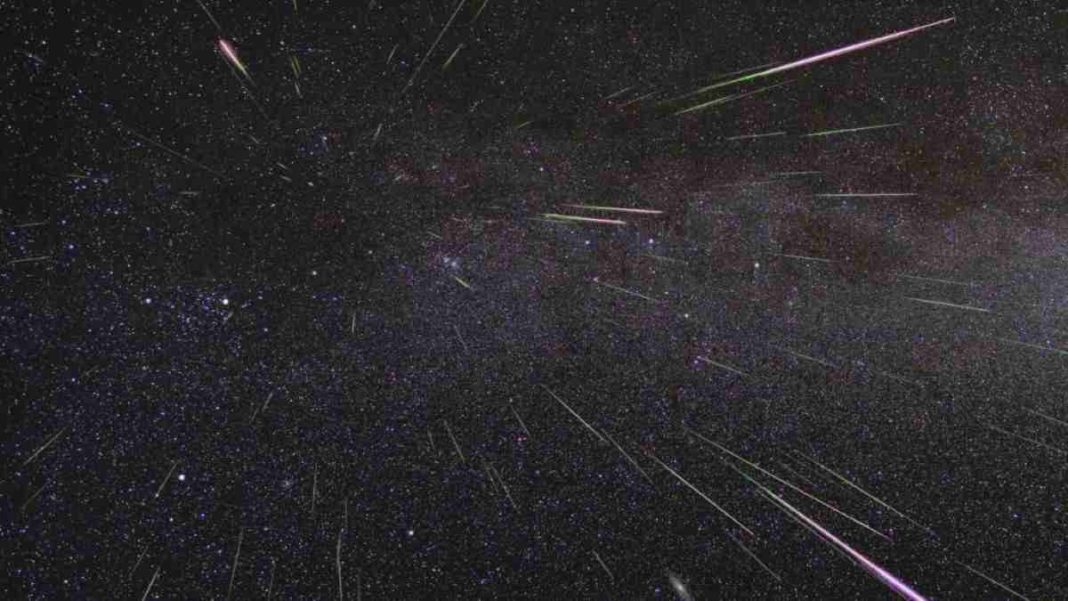UNITED STATES: The annual Perseid meteor shower is set to dazzle stargazers late on the night of Aug. 12–13, with ideal conditions predicted for this year’s peak. Families on August vacations and late-summer campers will have a front-row seat to witness this “Old Faithful” shower at its finest.
The Perseids, known for their reliability and strength, are one of the most highly anticipated meteor showers of the year, second only to the Geminids in December.
Earth’s orbit takes us through the densest part of the Perseid meteoroid stream around August 12 each year, resulting in a mesmerizing display of “shooting stars” that appear almost like clockwork.
While the rate of meteors can vary, an observer under a dark sky might typically spot over 60 Perseids per hour between midnight and dawn. These meteors are known for their brightness, flaring, and fragmenting trails, leaving awe-inspiring streaks in the night sky that persist for several seconds.
Astrophysicists Margaret Campbell-Brown and Peter Brown predict that Earth will pass through the densest part of the Perseid stream around 4 a.m. EDT on Sunday, August 13.
This rare celestial alignment promises a sharp peak that lasts only about eight or nine hours, making North America, especially the eastern regions, optimally positioned to witness this year’s stunning meteor shower.
What makes this year’s Perseids even more special is the moon’s cooperation. Unlike last year, when the bright full moon washed out the display, the moon in 2023 will be a waning crescent, only 8 percent illuminated, and three days before the new moon.
It will not rise until around 3 a.m. local daylight time on August 13, allowing for optimal viewing conditions. Stargazers can rejoice, as the lack of moonlight will enhance the visibility of the meteors as they streak across the sky.
The Perseid meteor shower originates from the comet 109P/Swift-Tuttle, which follows a long elliptical orbit around the sun, shedding bits of debris each time it approaches the sun. These remnants travel along the comet’s orbital path, creating a sparse “river of rubble” in space.
The meteoroids range from sand grains to pebbles and travel at incredible speeds of 40 miles (60 km) per second, producing incandescent trails of ionized air as they vaporize upon entering Earth’s atmosphere.
To witness the Perseid shower at its best, stargazers should look towards the radiant point, located between the Perseus and Cassiopeia constellations near the famous Perseus Double Cluster.
The meteors will seem to diverge from this radiant point due to the effect of perspective, with short trails for those appearing near the radiant and longer ones for those further away.
The best time to observe the Perseids is during the late-night hours of Saturday, August 12, until the first light of dawn on Sunday, August 13. As the radiant rises higher in the northeast throughout the night, more meteors will become visible, creating a breathtaking celestial display.
For those eager to take part in the meteor count, lying in a lawn chair or on the ground and noting the appearance of “shooting stars” is all that is required.
Count the number of meteors seen during specific observing periods, and keep track of the sky view blocked by obstructions or occasional clouds.
Meteor counts can be made on several nights before and after the peak to understand the shower’s behaviour away from its maximum.
The Perseids carry with them a rich history, with the earliest record of their activity dating back to Chinese annals in 36 AD. In Medieval Europe, they were known as “The Tears of St. Lawrence,” commemorating the martyrdom of Christian deacon Laurentius on his feast day, August 10.
The abundance of shooting stars seen annually between Aug. 8 and 14 was likened to St. Lawrence’s “fiery tears.”
As the Earth aligns with the Perseid stream on peak night, stargazers can look forward to a magnificent display of cosmic wonder. The Perseid meteor shower promises to be a celestial spectacle, a reminder of the vastness and beauty of the universe we inhabit.
So, mark your calendars and get ready to witness nature’s breathtaking light show on the nights of August 12–13.
Also Read: Woman Struck by Meteorite While Enjoying Coffee with Friend in Rare Astronomical Accident



